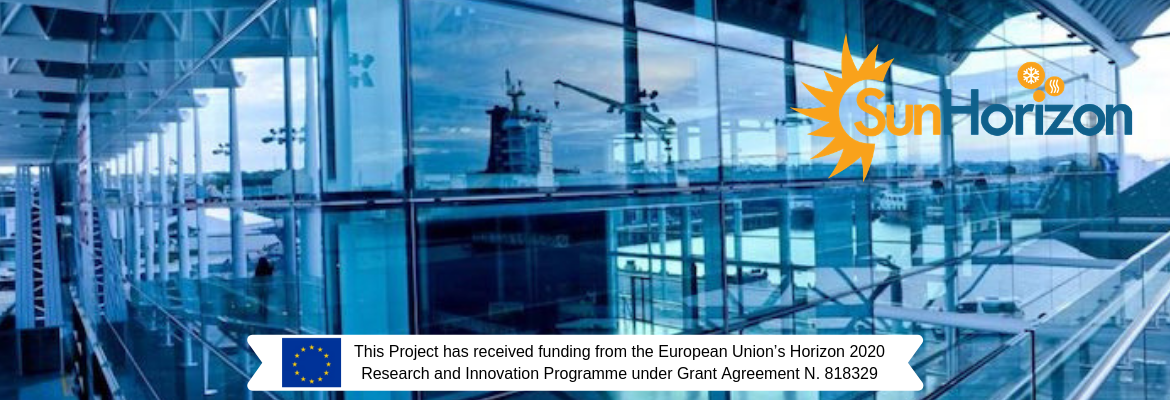Interview to Mr. Víctor Martínez del Rey, Director of Urban Quality and Mobility Department of Sant Cugat City Council, Ajuntament de Sant Cugat del Vallès (AJSCV), Spain
Demo site ID:
Location: Mira-sol Civic Center, in Sant Cugat del Vallès (Spain)
Type of building: Tertiary Civic Center. This building was built in two phases:
The first one was built in October 1996 / 1.268,69 m2
The second one was built in February 2006 / 2.440,25 m2 (demo site building).
Number of floors: 1
Structure type (roof): Structural roof-Deck+Roofmate insulation (4cm)+Roofmate insulation (4 cm)+gravel
Structure type (walls): Glass Reinforced Concrete
Occupancy: between 40-150 people
Climate: Mediterranean
Technologies and partners involved in this demo site:
TVP Solar SA (TVP): solar thermal panels.
Fahrenheit Gmbh (FAHR): hybrid adsorption-compression chiller
Ratiotherm Heizung + Solartechnik Gmbh & Co. KG (RATIO): stratified thermal storage tank
Veolia Serveis Catalunya SAU (VEO): demo site responsible
Ajuntament de Sant Cugat del Vallès (AJSCV): demo site responsible
Date of the demo site visit: 1st of February 2019 – All the partners involved in Sant Cugat demo site visit checked the current heating and cooling installations and particularly the availablespace in the technical rooms (where we will install the H/C systems and the storage tank) and roof top space (for installation of solar collectors).
BRIEF PRESENTATION OF THE DEMOSITE
The Sant Cugat demo site building (Mira-sol Civic Center) is a municipal facility (tertiary building) that has different spaces to develop all kinds of cultural activities.
Mira-sol Civic Center offers: a wide program of courses and workshops; public cession of spaces; service to support entities and collectives of the neighborhood; revitalization of popular and traditional culture; child service activities; a stable cultural program with small-format shows.
It is located in Mira-sol neighbourhood of Sant Cugat del Vallès, a town close to Barcelona. The demo site building is divided in two structural areas, as it was constructed in two stages.
Currently, the heating and cooling installation (second stage building) is formed by the following equipments:
Reversible air to water heat pump: 93.6 kW (cooling capacity) – 96.3 (heating capacity)
Air handling unit: 110 kW (cooling capacity) – 67.78 (heating capacity)
Regarding the supply we have electricity (rate 3.0A with power P1: 65kW, P2: 65 kW,and P3). No Gas.
What are the energy challenges of your demo site?
In terms of energy the main purpose is to sectorize the air conditioning system according to the occupation (comfort temperature of each classroom), and at the same time we want to reduce the consumption of air conditioning from machine that we currently have.
Do you see any policy obstacles referred to SunHorizon technologies application, specifically related to the local/national regulations where the demo site is located and, more in general, at EU level?
No, at local level the Municipality strategy and policy in terms of decarbonization and high efficiency refurbishments are completely aligned with the aims of SunHorizon project.
At national and EU level can’t see any policy obstacles to develop the SunHorizon applications in our demo site.
What is your motivation to participate in the project and which is your role?
Since 2019, all the new buildings constructed by the Public Administration must meet the nZEB standards. This will also affect buildings where a deep renovation will be performed, since the regulations normally force to refurbish by using the same standards as for the new buildings.
On the other hand, cities will play a major role in achieving the targeted energy and environmental objectives in Europe, by adopting specific actions.
Therefore, I consider interesting applying the SunHorizon technologies to Mira-sol Civic Center, coinciding with the H&C system renovation (sectorization of air conditioning system according to rooms occupation)
Which are the expected benefits your company aims to demonstrate in the SUNHORIZON project?
Is expected that the solutions applied in SunHorizon will rely on renewable, local energy sources to promote feasible alternatives to traditional fossil fuel-based solutions. The application of these solutions are expected to have a positive impact in terms of: GHG emission savings and primary energy savings, among others.
The share of energy consumption from RES increases the primary energy savings and the CO2 emissions savings considerably. Furthermore, it is expected that the thermal energy bill is reduced despite not increasing the investment cost.
Pictures of the demo site:



























